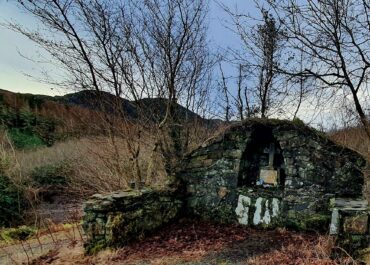Booley hut, Edergole (Lough Eask Ed), Co. Donegal
Hidden beneath the dense canopy of a Coillte Teoranta forestry plantation near Lough Eske in County Donegal, a remarkable collection of archaeological sites lay undiscovered until a routine clear-fell operation in autumn 2003.
Booley hut, Edergole (Lough Eask Ed), Co. Donegal
The initial discovery came when John Williams, the company’s Regional Environmental Manager, spotted unusual features during the harvesting work about 9km northeast of Donegal town. What began as a chance observation on the steep, western slopes of the Corraber River valley would soon reveal an entire forgotten landscape of 18th and 19th century rural life.
The forestry sits on challenging terrain, where springs and streams meander down slopes of peaty soil overlaying carboniferous slate and sandstone. When archaeologist Emmet Byrnes arrived to assess the site in November 2003, he documented far more than the two small farmsteads already marked on old Ordnance Survey maps. The clear-felling had exposed a completely unrecorded farmstead, complete with a byre and limekiln, all arranged along a north-south ridge. Surrounding this central settlement, the archaeological team identified two conjoined turf-built cottages, a walled garden plot known as a ‘garraí’, seven clearance cairns, and at least two, possibly three, booleying huts; temporary shelters used by farmers during summer months when moving cattle to upland pastures.
These booleying huts offer a fascinating glimpse into traditional Irish transhumance practices. The larger of the two main huts measures roughly 4.5 by 4 metres, built from turf and earth with its entrance facing southeast, likely positioned to catch the morning sun whilst sheltering from prevailing westerly winds. Such structures represent a pastoral tradition that stretched back centuries, where communities would move their livestock to mountain pastures during summer months, living in these simple dwellings whilst tending their herds. The Edergole discoveries, now catalogued in the Record of Monuments and Places for County Donegal, remind us how much of Ireland’s rural heritage remains hidden in plain sight, waiting to be revealed by chance or circumstance.


